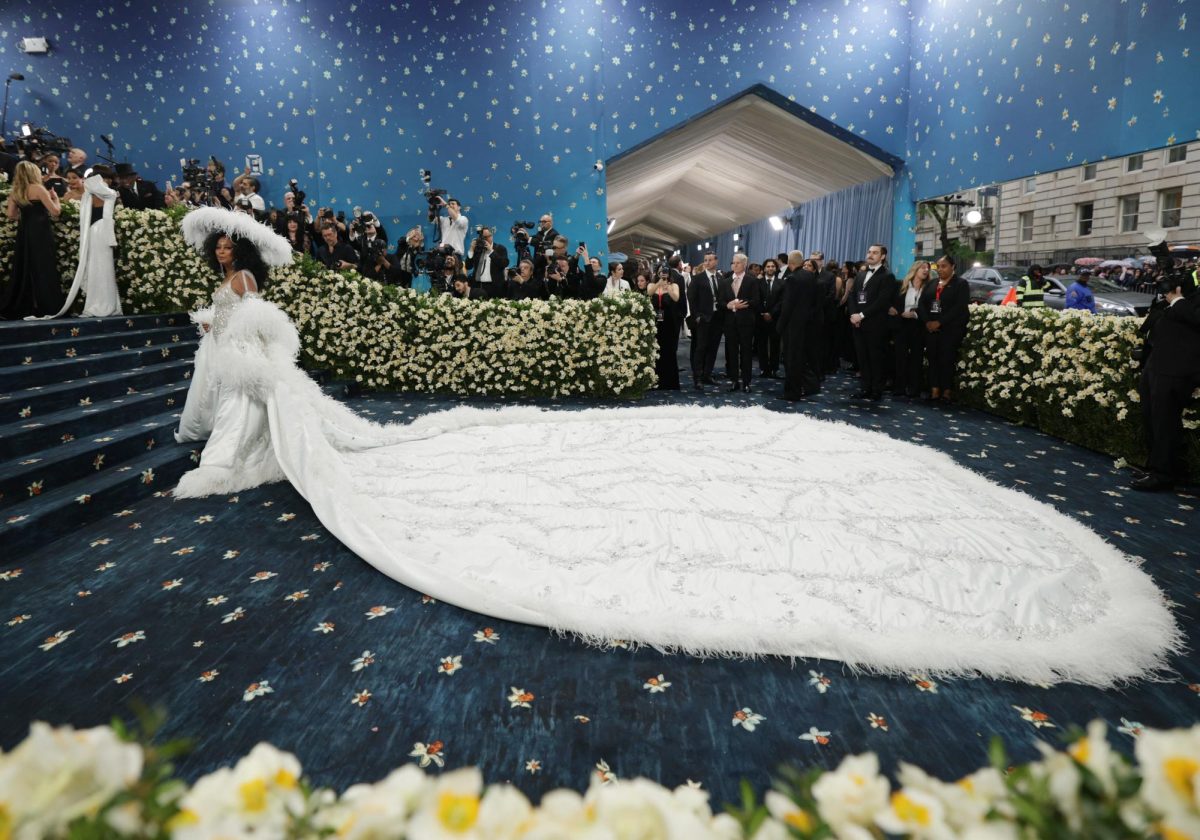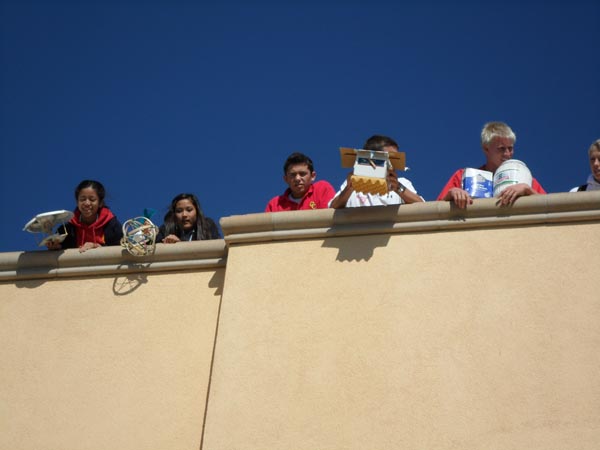On November 17th, physics students and science enthusiasts alike gathered below Cathedral Catholic’s gymnasium by the pool to watch the infamous annual Egg Drop. Following the example of the chemistry students and their Mole Day celebrations, competitors from Miss Radostina Zlatanov’s physics and AP Physics classes participated in the Egg Drop in order to excite fellow students about physics and its practical applications.
Prior to the fateful launch, students constructed devices of original design in order to protect their egg. The rules for the Egg Drop were: the egg and its container must hit the ground and be the 450-500 grams (about a pound), the egg must be from a chicken and only one egg may be used, the dimensions of the device cannot not exceed 20x20x20 cm, the egg must be easily removed so it can be inspected after the fall, and any wings or propellers used must be handmade. Furthermore, students had to build the container to protect the egg; they were not allowed to stuff the egg inside any soft material such as a stuff animal or pad the egg inside a box with cotton or bubble wrap.
Senior AP Physics student Megan Depew-Brady said the inspiration for her design was in the kinetic toys with snap-on and magnetic components that make them easy to build. Cleverly named Sputnegg 3, her duct-tape enforced device housed “Egglord Nonscamblof,” an “egg astronaut of sorts.”
Megan also said she spent about five hours building her piece; the most time-consuming portion of the project was allowing the glue that held Sputnegg together to dry. Sputnegg endured the fall, but “Egglord” suffered a minor crack. “The whole idea of the structure was shock absorption so that the egg would not break with impact of the fall, so my design kind of worked,” Megan said.
Fellow AP Physics student senior Olivia Balmert and “partner-in-crime” Kimberlee Holland had the same idea as Megan. Together they built a colorful pink and green dodecagon, a twelve-sided polygon from plastic straws. The egg was suspended in the middle of the contraption.
“The most important aspects of the contraption were that the egg never touched the ground or any surface conducting the full force of the impact of the device on the ground. The elasticity of [our dodecagon] prevented the egg from hitting any surface that would break its fragile shell,” said Olivia.
Both Olivia and Megan advise students interested in participating in a future egg drop to follow the provided guidelines as well as use their creativity in order brainstorm as many ideas as possible, “analyzing which proposed designs will work best and why,” added Olivia. They encourage prospective competitors to also test their ideas in advance so that they can be fully prepared.
“This project was tons of fun, and definitely the best science project I’ve done,” said Megan.
“We enjoyed the project, both as an excellent means of bringing our studies of theoretical physics to life as well as an opportunity to exercise our creativity and ability to work as a team. It was fun to gather with all of Miss Z’s students behind the gym united in our enthusiasm for physics, and this event was definitely memorable,” said Olivia.





















































